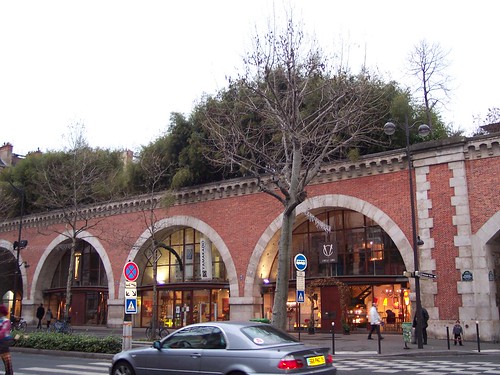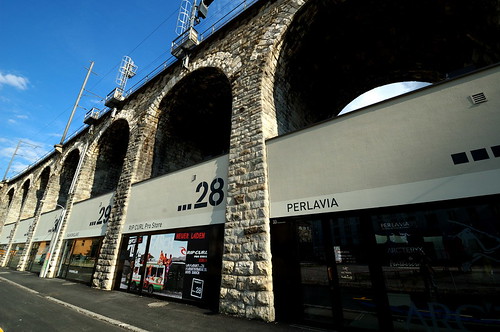I've been thinking about this. In my rough skecth for Comm Ave a multiuse path fits under the el with a two pier configuation. A single pier would just create dead space. See charlieMTA's picture of the Seattle el - the space underneath the single pier structure is virtually unusable and barren.
Amen. An el line "elevates" (pun intended) the surrounding environment only when the space underneath is used. It's not an accident that the areas around the single-pier el in Seattle depicted above look dead (and when you see the elevated lines leading out to SEA-TAC airport, it's certainly a stretch to say that they are objectively nice-looking or improve / "urbanify" the environment). Similarly, look at the photo from Queens above. The surrounding area is dead.
It's not an accident that the areas immediately surrounding many elevated rail lines in New York -- the 7 line in Queens, the D/N/F/B/Q (can't remember if all of them are elevated) in Brooklyn, the 4 and Metro-North in Harlem -- and even the El in Chicago's Loop deaden streetlife around them or, if they're on a busy corridor (as in Chicago and parts of Brooklyn), depress the surrounding real estate while not deadening it (in layman's speech, the streets tend to be skeezy).
In a word, I get (and recall) the noir-ish glamour of elevated subways. However, as was the case with the Central Artery, under an elevated highway or subway, you most often have a perpetually dark, trash-strewn deadzone that's either covered in crabgrass or paved. These areas -- in part because the infrastructure overhead is not always impeccably maintained, tends to drip, etc. -- don't work out very well -- they divide one side of the street from the other visually and in terms of pedestrian movement, and people aren't inclined to spend much time underneath them. This is especially true if the el is dull concrete rather than stone/steel, which at least tends to have more aesthetic appeal.
The most successful integrations of elevated rail (or road) and surrounding city that I've seen all have built out the area under the rail (road). Without turning the areas under the elevated transit into stores, cafes, bars, offices or whatever else, elevated rail leaves a black mark on a street, in my experience.
A few examples of success:
Vienna:
Paris:
Zurich:
New York (Queensboro Bridge):
One thing these all have in common is that they are all in pre-war structures that therefore were built according to classical methods featuring graceful arches, stone, iron/steel, etc. I don't know if building infrastructure this successful, or at least this aesthetically appealing, would even be possible in today's world of value engineering; cheap, pre-fab materials; and pared-down (and ugly) Modernism. My guess is not.







